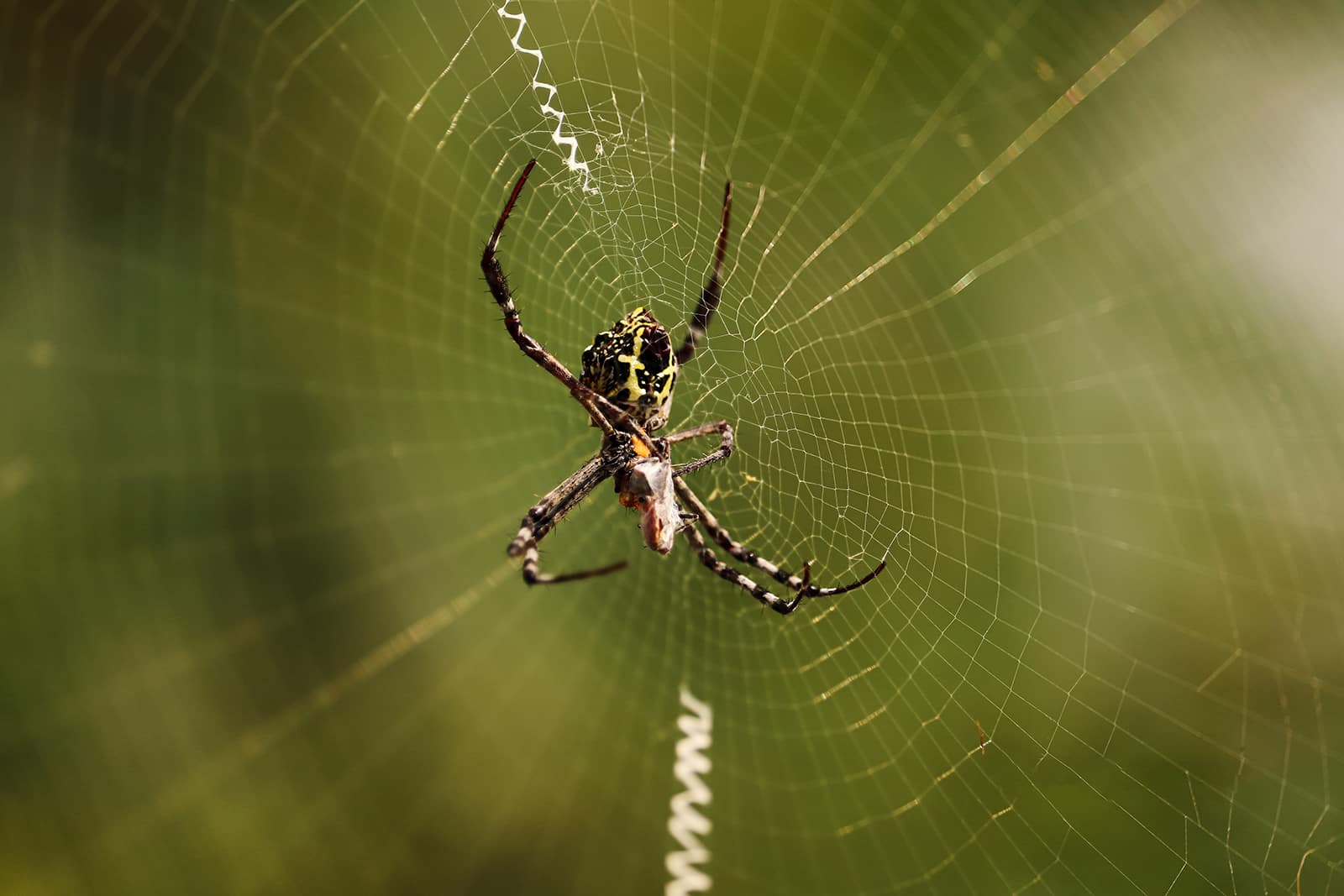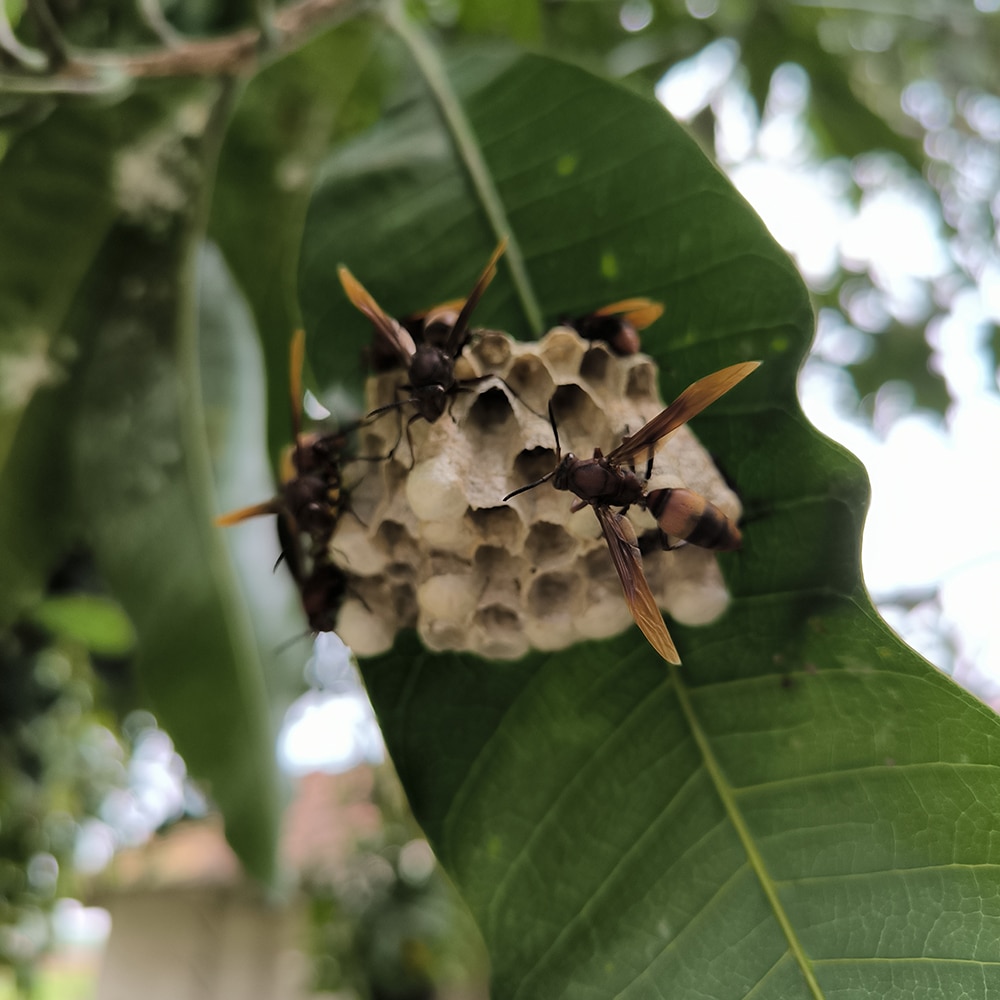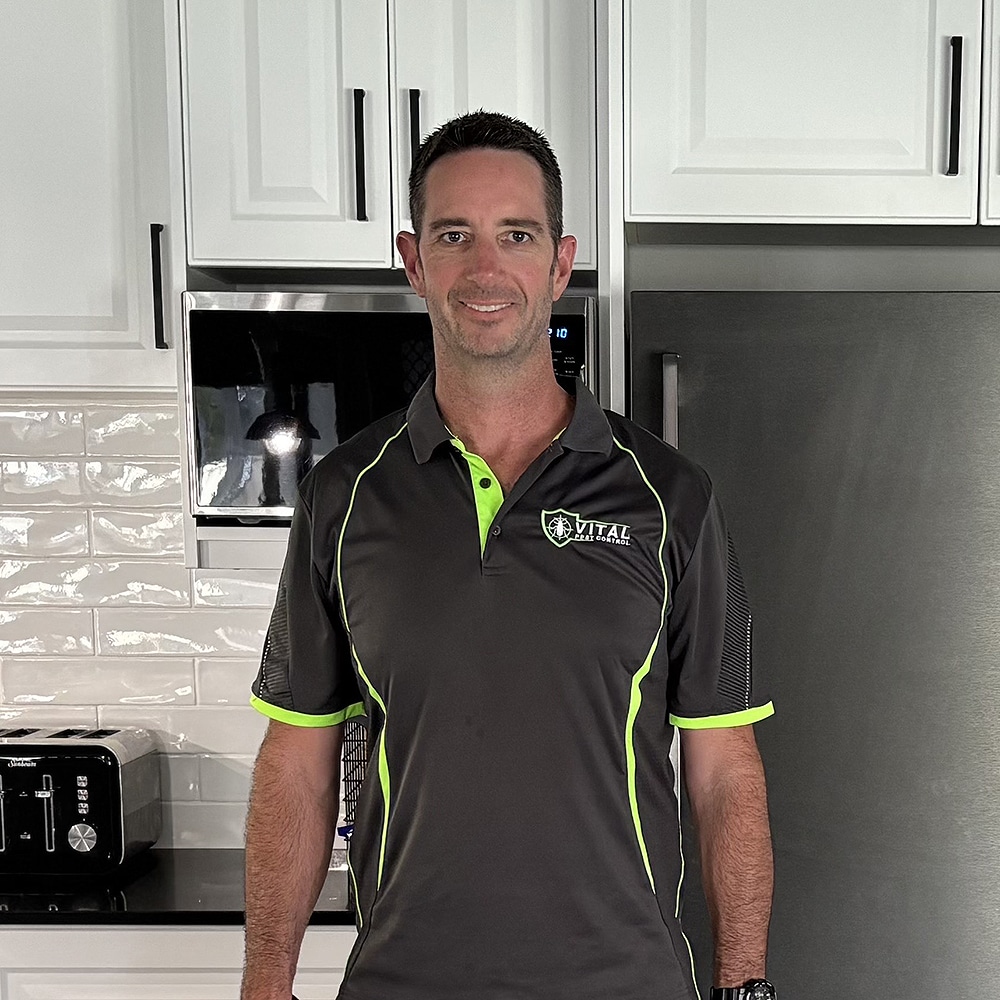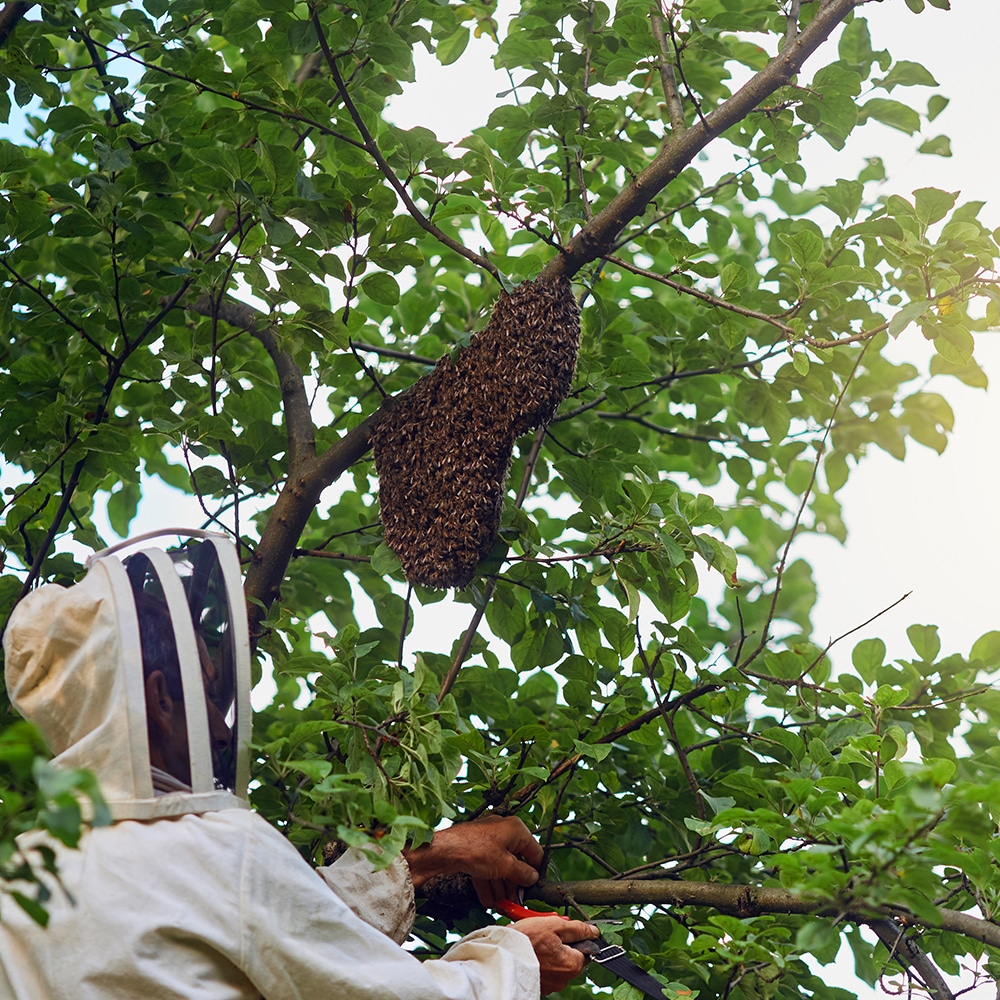
Why Do Spiders Come Back And Why
Why Do Spiders Come Back And Why On The Central Coast NSW. Responsive Proactive Solutions. Detail-focused for lasting results. Call Adam on 0431 222 894
How to Safely Remove a Wasp Nest from Your Property can be daunting. Understanding the right steps is crucial for safety. On the Central Coast NSW, Vital Pest Control offers reliable solutions. Here’s how you can handle wasp nests effectively.
How to Identify a Wasp Nest
Spotting a wasp nest early helps prevent issues. Look for papery structures in sheltered spots. These nests are often found under eaves, in trees, or wall cavities. Identifying them early can make removal easier and safer.
Best Time of Day to Remove a Wasp Nest
Remove nests during early morning or late evening when wasps are less active. This timing reduces the risk of stings and allows for a more controlled removal. Working during these hours ensures a safer experience.
How to Wear Protective Gear for Wasp Nest Removal
Proper gear is essential for safety. Wear thick clothing like long sleeves and pants. Gloves and a hat with a veil offer extra protection. Ensure no skin is exposed to minimise sting risks.
Why You Should Not Attempt Wasp Removal During Peak Activity
Avoid removing nests when wasps are most active, typically midday. This reduces aggression and sting chances. Patience and timing can significantly affect the outcome.
DIY vs Professional Wasp Nest Removal
DIY removal may seem cost-effective but consider the risks. Professionals like Vital Pest Control provide expertise and safety. They handle nests efficiently, ensuring peace of mind.
How to Safely Use Wasp Sprays
When using sprays, maintain a safe distance. Follow the instructions carefully to minimise exposure. Sprays can be effective if used correctly and with caution.
What to Do if Wasps Become Aggressive
If wasps turn aggressive, retreat calmly. Avoid swatting as it may provoke them further. Seek shelter indoors and wait for them to settle. Staying calm is key.
Best Natural Remedies for Wasp Nest Removal
Natural remedies include peppermint oil or soap solutions. These can deter wasps without harsh chemicals. Apply these solutions cautiously to avoid agitation.
Discover how we can help you today! Visit our Contact page for more details.

Identifying a wasp nest early is crucial for ensuring safety and effective pest control. In the Central Coast of NSW, where wasps are common, knowing what to look for can help you address the issue before it becomes a bigger problem.
Observe Wasp Activity
The first step in locating a wasp nest is to observe wasp activity around your property. Notice where wasps frequently enter or exit, as this can indicate nest location. Wasps often follow the same flight path, making it easier to track their movements. Early morning or late afternoon are ideal times for observation when wasps are most active.
Check Common Nesting Spots
Wasps prefer certain areas for nesting, so inspect these spots closely. Common places include under eaves, in wall cavities, and among dense trees or bushes. Wasps may also nest in sheds, garages, or under outdoor furniture. By scanning these areas, you can identify potential nests before they grow larger.
Look for Nest Characteristics
Wasp nests have distinct features that can help with identification. They usually have a papery texture and are greyish in colour. The size can vary, but nests often resemble large, rounded structures. Some nests hang, while others might be concealed within structures, so a thorough inspection is necessary.
Timing is crucial when it comes to safely removing a wasp nest. For residents on the Central Coast of NSW, understanding the best time of day can make the process significantly safer and more efficient. Wasps are less active during certain times, which reduces the risk of stings and disturbances. Let’s explore the optimal times to tackle this task.
Early Morning Benefits
The early morning is one of the best times to approach a wasp nest. During these hours, wasps are typically sluggish due to cooler temperatures, making them less aggressive. Most wasps remain inside the nest in the morning, which allows for a more comprehensive treatment. This time also provides better visibility to identify the nest’s entrance and structure without the sun’s glare.
Evening Strategies
Evenings offer another strategic window for wasp nest removal. As the sun sets, wasps return to their nests, becoming more docile. The fading light and cooler temperatures calm the wasps, reducing flight activity. This makes evenings an ideal time for those who prefer working after standard hours. It’s important to have adequate lighting to ensure precision and safety during this time.
Avoid Midday
Midday is the least favourable for wasp nest removal. The warmth and light encourage wasp activity, increasing the likelihood of aggression. Wasps often forage during these hours, meaning more are outside the nest, complicating removal efforts. To ensure a safe and effective experience, it’s best to avoid this busy period.
When dealing with wasp nests, safety is paramount. Wearing the right protective gear can prevent painful stings and potential allergic reactions. For anyone on the Central Coast NSW considering DIY wasp removal, understanding how to properly wear protective gear is crucial.
Wear a Full-Body Suit
A full-body suit offers comprehensive coverage, protecting against wasp stings. Ensure the suit is thick enough to prevent wasps’ stingers from penetrating the material. It’s important to check that the suit fits snugly, minimising any gaps where wasps might enter. Choose a suit with elastic cuffs at the wrists and ankles for added protection.
Use Gloves and Boots
Gloves safeguard your hands, a primary target for wasps. Opt for thick, durable gloves that extend to the elbows. Similarly, sturdy boots prevent stings on your feet and ankles. Tuck the ends of your pants into the boots to eliminate entry points for wasps.
Secure a Protective Mask
A protective mask shields your face, reducing the risk of stings in sensitive areas like the eyes and mouth. A beekeeper-style hat with a veil offers excellent protection. Ensure the veil is tightly secured around the neck to stop wasps from flying inside.
By wearing appropriate gear, you’ll significantly reduce the risk of wasp stings during nest removal. This approach not only protects your wellbeing but also ensures a safer, more effective pest control experience.
Removing a wasp nest might seem like a task you can tackle yourself, but timing is crucial. Attempting wasp removal during peak activity can lead to unnecessary risks. Understanding when and why to avoid these times is key for ensuring safety and effectiveness.
Increased Aggression
Wasps are most active during the day and in warmer months, which is when they’re likely to be more defensive. Disturbing a nest during this peak activity can provoke a swarm, increasing the risk of stings. Wasps defend their nest aggressively when they sense a threat, making removal attempts more dangerous.
Higher Risk of Stings
Tackling a wasp nest when they are buzzing around in large numbers heightens the chance of being stung. Wasp stings can be painful and, for those allergic, potentially life-threatening. By avoiding peak times, you reduce the likelihood of multiple stings.
Ineffective Removal
Attempting removal during peak activity may lead to incomplete results. Wasps returning to a disturbed nest can rebuild and fortify it quickly. By waiting for cooler, less active times, you ensure a more thorough and effective removal, minimising the chance of re-infestation.
Expert Assistance
For those on the Central Coast NSW, engaging a professional pest control service like Vital Pest Control ensures the nest is handled safely. Experts have the right tools and knowledge to remove nests effectively, even during peak activity, reducing the risks involved in DIY attempts.
Removing a wasp nest can seem like a daunting task, especially on the Central Coast in NSW where wasps are common. Deciding between a DIY approach and hiring a professional pest control service like Vital Pest Control requires weighing up several factors. Understanding the differences can help ensure a safe and effective resolution.
Safety Concerns
Tackling a wasp nest on your own can pose significant risks. Wasps become aggressive when threatened, leading to potential stings. This makes it crucial to consider personal safety. Professionals, equipped with protective gear, can handle nests with minimal risk. They have the training to manage wasp behaviour, reducing the likelihood of stings.
Effectiveness
DIY solutions might not always eliminate the problem. Store-bought sprays or homemade methods can fail to reach the nest’s core, allowing wasps to rebuild. Professional pest control services use specialised equipment and techniques. This ensures complete removal, preventing wasps from returning and causing future issues.
Cost Implications
Initially, DIY might seem more budget-friendly. However, repeated attempts to remove the nest can add up. If not done correctly, the expenses from potential medical bills or property damage can outweigh the costs. Hiring a professional can be a cost-effective solution in the long run, offering peace of mind and a guarantee of thorough nest removal.
Using wasp sprays effectively can be crucial in eliminating wasp problems on the Central Coast NSW. It’s vital to handle these chemicals safely to protect yourself, your family, and the environment. Understanding the correct methods and precautions can make the process less daunting and more efficient.
Choose the Right Time
Timing is everything when using wasp sprays. Wasps are less active during early morning and late evening, making these periods ideal for treatment. This is when they are typically in the nest and less likely to swarm. Using the spray during these times minimises the risk of getting stung.
Wear Protective Gear
Safety should be your top priority. Wear long sleeves, pants, gloves, and goggles to shield yourself from potential stings and chemical exposure. Thick clothing can prevent wasps from penetrating your skin if they become aggressive. Proper gear also helps protect against accidental contact with the spray.
Maintain a Safe Distance
When applying wasp spray, keep a safe distance from the nest. Most sprays have a range of several metres, allowing you to stay back while effectively targeting the nest. This distance reduces the chance of wasps retaliating and increases your overall safety during the process.
Follow Label Instructions
Always read and follow the instructions on the wasp spray label. These guidelines ensure effective usage and minimise risks. The label provides important information on how to apply the spray, the amount needed, and the recommended safety precautions. Adhering to these instructions enhances safety and efficacy.
If wasps become aggressive on your property, it’s crucial to act swiftly and safely. Wasps are territorial and can pose significant threats, especially when they feel their nest is in jeopardy. Understanding how to handle these situations can prevent unwanted stings and potential harm.
Stay Calm and Move Slowly
When faced with aggressive wasps, your first step is to stay calm. Sudden movements can provoke them further. Slowly and carefully move away from the area without waving your arms. Wasps detect movement easily, and frantic actions may increase their aggression.
Identify Safe Shelter
Seek immediate shelter if wasps begin to swarm. Retreat indoors or enter a vehicle, ensuring doors and windows are promptly closed. This safe haven will protect you from potential stings while you assess the situation and decide on further actions.
Contact Professional Help
After securing yourself, contact a pest control expert like Vital Pest Control on the Central Coast NSW. Professionals have the expertise and equipment to handle wasp nests safely. Attempting to remove or disturb a nest yourself can escalate aggression and endanger your safety.
Avoid DIY Remedies
Refrain from using DIY wasp control methods. Home remedies often aggravate wasps, increasing the risk of an attack. Professional intervention ensures that wasp removal is conducted efficiently and safely, minimising hazards for you and your family.
Wasps can be a menace on the Central Coast of NSW. While professional services like Vital Pest Control offer effective solutions, some prefer natural remedies for wasp nest removal. These methods cater to those seeking eco-friendly options, ensuring minimal disruption to the environment.
Soap and Water Solution
One of the simplest natural remedies involves mixing soap and water. This solution can suffocate wasps, effectively rendering their nest inactive. Fill a spray bottle with water and add a few tablespoons of dish soap. Spray generously on the nest during early morning or late evening when wasps are less active. This method is non-toxic and easy to prepare, making it a popular choice for home remedies.
Essential Oils
Essential oils like peppermint can deter wasps. Mix a few drops with water and spray around the nest and other wasp-prone areas. The strong scent of peppermint disrupts the wasps’ ability to communicate, encouraging them to leave the area. While this method doesn’t kill wasps, it effectively drives them away, offering a natural alternative to chemical repellents.
Vinegar Trap
A vinegar trap can also be effective for wasp nest removal. Fill a container with a mixture of vinegar, sugar, and water, and place it near the nest. Wasps are attracted to the sweet scent and get trapped in the liquid. This method helps reduce wasp numbers gradually, offering a more controlled approach to nest removal. Ensure the trap is placed at a safe distance from frequented areas.
Wasps can be a real nuisance on the Central Coast. Removing a nest is only half the battle. To stop wasps from coming back, it’s crucial to take action after the removal. Here’s how you can prevent wasps from returning to your property.
Seal Entry Points
Wasps often return to familiar sites. Check your home for gaps or holes where they might enter. Seal these points with caulk or mesh to stop them in their tracks. This simple step can effectively deter wasps from attempting to rebuild their nest.
Remove Attractants
Wasps are drawn to food and sweet smells. Keep outdoor bins tightly closed and clean up any food residue. If you have fruit trees, pick up fallen fruit promptly. Minimising these attractants will reduce the chances of wasps being lured back.
Use Natural Repellents
Natural repellents like peppermint oil can be effective against wasps. Mix it with water and spray around areas where nests were found. This creates an environment that wasps find unappealing, discouraging them from rebuilding.
Plant Wasp-Repelling Vegetation
Certain plants like eucalyptus and wormwood naturally deter wasps. Planting these around your garden can serve as a natural barrier. They not only beautify your landscape but help keep wasps at bay.
Wasps can be a real nuisance, especially when they decide to nest in walls or ceilings. It’s crucial to handle the removal safely to avoid stings and ensure they don’t return. Let’s explore the steps for effectively removing wasp nests from your property on the Central Coast NSW.
Identifying Wasp Activity
First, observe the wasps’ entry and exit points. Early morning or late afternoon is ideal for this. Wasps are less active during these times, allowing you to safely pinpoint their nesting spots. Look for small holes or gaps in walls or ceilings where they frequently come and go.
Gathering Necessary Tools
Safety is paramount. Equip yourself with protective clothing, gloves, and goggles. A wasp spray specifically designed to tackle nests is essential. A ladder may be needed for high ceilings, but ensure stability to prevent accidents.
Timing the Removal
Late evening is best for nest removal. Wasps are less active, reducing stinging risks. Spray the nest thoroughly with wasp spray, focusing on entry points. Follow product instructions for effective results. If the nest is within a wall, consider professional help to avoid structural damage.
Sealing Entry Points
After removal, sealing entry points helps prevent future infestations. Use caulk or plaster to close gaps in walls or ceilings. Regular maintenance checks ensure wasps don’t find new entryways, keeping your property safe and wasp-free.
Managing underground wasp nests can be tricky, especially on the Central Coast of NSW. These nests pose unique challenges, requiring care and expertise. Vital Pest Control provides insights into safely handling these hidden threats to ensure peace of mind for property owners.
Recognising the Nest
Identifying an underground wasp nest is the first step to effective control. Look for increased wasp activity near the ground, especially in dry, sandy soil or garden beds. Wasps often enter and exit through a single hole, which can be a giveaway. Observing these patterns helps pinpoint the nest’s location without disturbing it.
Safety Precautions
Safety comes first when dealing with wasps. Protective clothing, including gloves and face protection, is essential to prevent stings. Approach the nest quietly to avoid alarming the wasps. Always have an escape route planned in case of sudden wasp aggression, which can be unpredictable.
Professional Intervention
Engaging professionals like Vital Pest Control ensures a thorough and safe removal process. Experts use specialised equipment and techniques to eliminate nests without causing harm to the surrounding environment. Their experience means they can effectively manage the situation, reducing the risk of wasp stings and nest re-establishment.
Removing a wasp nest can be a tricky task, especially when considering traditional methods like smoke or fire. Many people think that smoke can drive away wasps, making nest removal safer. However, this approach might not always be effective or safe. On the Central Coast NSW, where wasp activity can be high, understanding the implications of using smoke or fire for wasp nest removal is crucial.
Effectiveness of Smoke in Wasp Nest Removal
Smoke can sometimes calm wasps, making them less aggressive during nest removal. However, this calming effect is temporary. Wasps may return to their nest once the smoke clears, requiring repeated attempts. Additionally, not all wasps react similarly to smoke, so its effectiveness can vary widely depending on the species.
Risks of Using Fire for Nest Removal
Using fire poses significant risks, especially in areas prone to bushfires like the Central Coast. Fire can easily get out of control, damaging property and endangering lives. Moreover, burning a nest doesn’t guarantee complete removal of the wasp colony, as some wasps might survive and rebuild.
Professional Pest Control as a Safer Alternative
For effective and safe wasp nest removal, consider hiring professional pest control services. Experts have the right tools and knowledge to remove nests without risking safety or property. Vital Pest Control on the Central Coast offers reliable solutions, ensuring wasps are dealt with efficiently and safely.
Wasps can be more than just a nuisance on your property; they can pose serious risks. Identifying the activity level of a wasp nest is crucial for determining when and how to remove it safely. For those living on the Central Coast of NSW, understanding these activity levels can help in planning effective pest control strategies.
Observing Wasp Traffic Patterns
One of the first signs of a wasp nest is the flight activity around the nest’s entrance. High traffic with multiple wasps entering and exiting indicates a bustling nest. Pay attention to peak activity times during the day, usually in the morning and late afternoon. This can help you gauge the nest’s size and activity level.
Listening for Buzzing Sounds
Listen closely for buzzing noises as you approach suspected nest areas. A faint sound might suggest a small or less active nest. However, a loud, consistent buzz typically means a larger colony. These auditory cues can be critical in assessing the nest’s threat level and determining the urgency of removal.
Spotting Nest Growth
Keep an eye on the physical growth of the wasp nest itself. Wasps build their nests from chewed wood pulp, giving them a papery appearance. Noticeable growth in the nest size over a short period signifies increased wasp activity. This visual cue is a clear indicator that the nest is becoming more active and potentially more dangerous.
When dealing with wasp infestations on the Central Coast of NSW, choosing the right commercial wasp nest removal spray is crucial for effective pest control. This guide explores some of the best options available to ensure your property remains safe and wasp-free.
Understanding the Importance of Active Ingredients
Active ingredients in wasp sprays are the key to their effectiveness. Look for sprays containing permethrin or tetramethrin, known for their rapid knockdown capabilities. These chemicals disrupt the nervous system of wasps, providing a quick solution to the problem. Ensure the product label clearly lists these ingredients to guarantee results.
Considerations for Application Distance
When choosing a spray, consider its application distance. Many commercial sprays offer a range of several metres, allowing you to tackle nests safely from a distance. This feature is essential for avoiding stings while ensuring the spray reaches the entire nest, maximising its effectiveness.
Environmental and Safety Features
Environmentally friendly options are becoming increasingly popular. Choose sprays that are biodegradable and have minimal impact on non-target species. Additionally, ensure the spray is safe for use around pets and children, as safety is paramount when dealing with pest control solutions.
Dealing with a wasp nest can be daunting, especially if you’re unsure when to seek professional help. While some nests may seem manageable, others pose significant risks, making it crucial to know when to call in the experts. Vital Pest Control on the Central Coast NSW provides essential services for safe and effective wasp nest removal.
Size and Location of the Nest
If the nest is large or located in hard-to-reach areas like roof eaves or wall cavities, it’s best to contact professionals. Attempting to remove it yourself can lead to wasp attacks or structural damage. Professionals have the tools and expertise to handle these challenging situations.
Allergic Reactions
Anyone in your household with known allergies to wasp stings should prompt an immediate call to pest control. Wasp stings can cause severe allergic reactions, and professional removal minimises the risk of such incidents. Safety should always be a priority.
Multiple Nests
Dealing with more than one nest significantly increases the challenge and risk. Professionals understand wasp behaviour and can efficiently tackle multiple nests, ensuring your property is safe from these aggressive insects.
Limited Time and Resources
Handling a wasp nest requires time, patience, and the right equipment. If you’re short on any of these, it’s prudent to hire professionals. This not only saves time but ensures the removal is done safely and effectively.
Please leave your details in the form and we will call you back the same day.
So that we can process your enquire efficiently please leave as many details as possible and upload any relevant images. (.jpg and .png format)

Why Do Spiders Come Back And Why On The Central Coast NSW. Responsive Proactive Solutions. Detail-focused for lasting results. Call Adam on 0431 222 894

Building a Long Term Residential Pest Protection Plan For Home Owners On The Central Coast NSW. Responsive Proactive Solutions. Detail-focused for lasting results. Call Adam on 0431 222 894

How to Protect Your Home from Wasp Infestations On The Central Coast NSW. Responsive Proactive Solutions. Detail-focused for lasting results. Call Adam on 0431 222 894